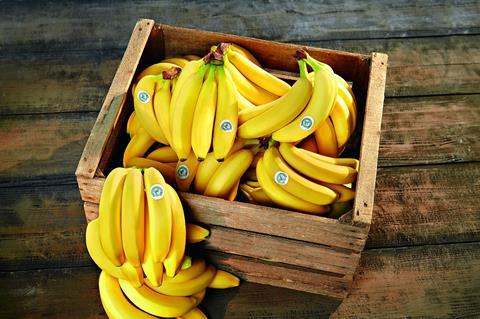Number of certified farmers increases but global production falls in a challenging year for the banana sector

The Rainforest Alliance saw its number of certified banana farmers rise by a quarter in 2021 but there was a decline in certified production globally amid weather challenges, the shocks of Covid-19, and increased costs.
The environmental certification body’s annual report revealed that the number of certified farmers was up 26 per cent to 2,670 compared to 2020/21, while the number of certified workers (seasonal and permanent) reached 187,812.
There was also a three per cent increase in the number of supply chain actors in the global Rainforest Alliance programme from 504 to 516.
However, certified volume fell by one per cent year on year to 9.4m tonnes, while the estimated planted area was down two per cent to just over 185,000ha.
Rainforest Alliance CEO Santiago Gowland said: “The past year tested our strength and resilience as individuals, as a team, and as an alliance. It is clear to us that our global crises are simply too big, too complex and too interconnected to be taken on alone.
“2021 proved yet again that we are stronger when we come together as an alliance, committed to nature-based economies that work with communities to protect, to restore and regenerate the social, economic and environmental systems on which our lives depend.”
The 26 per cent growth in the number of farmers mainly came from India and Sri Lanka, and there were also new producers joining in Africa and Latin America, which helped offset lower numbers of farmers in the Dominican Republic.
When it comes to workers, numbers increased significantly in Colombia and Ecuador but decreased in the Philippines.
Meanwhile, the fall in certified production volume can be attributed to several factors, according to the Rainforest Alliance, including a particularly heavy hurricane season in Latin America, the shocks of Covid-19, and cost increases.
The decrease in certified area was largely driven by sizeable decreases in Africa (especially Ghana, which no longer has any certified producers) and Asia Pacific (especially the Philippines).
Decreases there and elsewhere were partially offset by gains in Ecuador, Guatemala and other Latin American countries.



